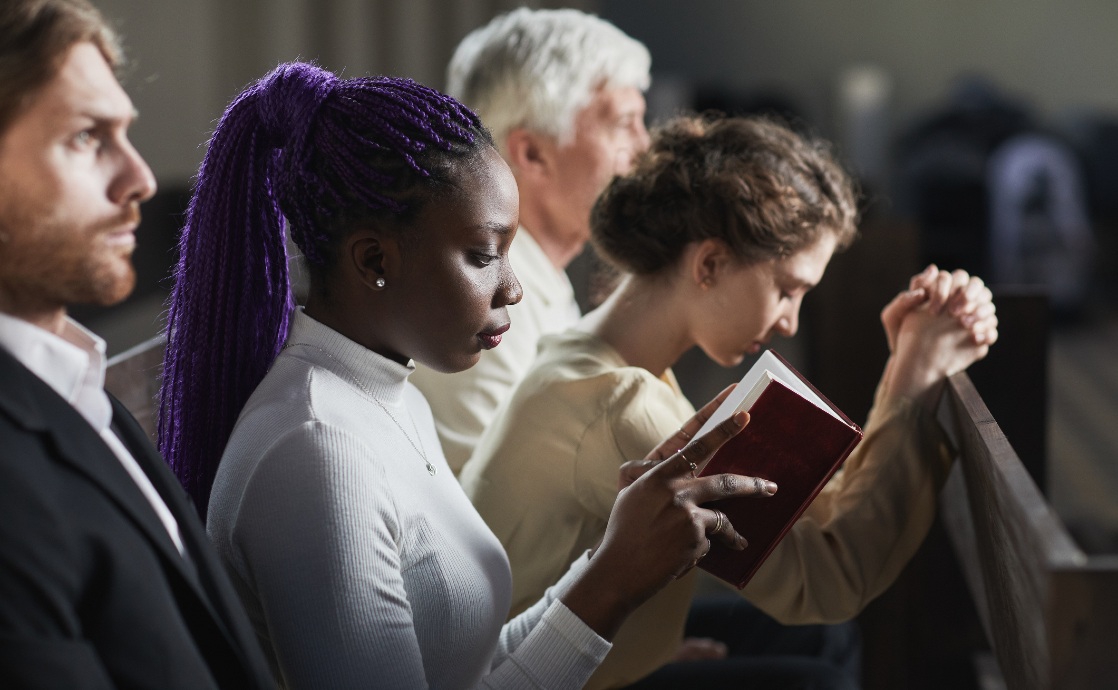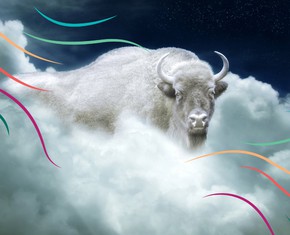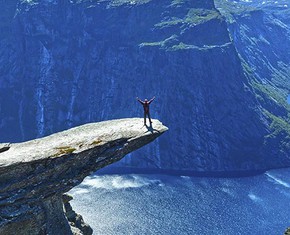The views expressed in our content reflect individual perspectives and do not represent the authoritative views of the Baha'i Faith.
What happened when the entire congregation of a Black church in Harlem became Baha’is?
In an earlier installment of this series, we learned about the First Emmanuel Church in Harlem, where in 1920 the members of a Black church became Baha’is, and began to promote the unity of the entire human race. We also learned how the pastor, Rev. Richard Manuel Bolden, “declared himself a Bahai” after having “studied the Bahai cause,” finding that “it had not made him less loyal to Christ.”
RELATED: Why a Harlem Baptist Preacher Became a Baha’i
Rev. Bolden said he “had discovered that this was a new Sun arisen in the horizon of truth,” as reported in the news story, “Growing Interest In Bahai Movement,” published in The Washington Bee on Saturday, September 18, 1920.
This was quite a remarkable event, following Baha’u’llah’s spiritual counsel and statement of purpose to all humanity:
My object is none other than the betterment of the world and the tranquillity of its peoples. The well-being of mankind, its peace and security, are unattainable unless and until its unity is firmly established. …
The utterance of God is a lamp, whose light is these words: Ye are the fruits of one tree, and the leaves of one branch. Deal ye one with another with the utmost love and harmony, with friendliness and fellowship. He Who is the Day Star of Truth beareth Me witness! So powerful is the light of unity that it can illuminate the whole earth.
Rev. Bolden’s founding of First Emmanuel Church in 1913 represented a departure from the existing Black church establishment. He wanted to seek out interracial cooperation and unity – which the New York Baha’is found out about. They took him up on that worthy endeavor, achieving thereby “the establishment in Baha’i circles in New York of a real unified fraternity between black and white, and an unprecedented lifting of the “colour bar,” described by one observer as “almost miraculous.”
All this was noted by the renowned Cambridge scholar Edward Granville Browne, one of the only Westerners to meet Baha’u’llah, in Professor Browne’s obituary of Abdu’l-Baha: “Sir Abdu’l-Baha Abbas: Died 28th November, 1921,” published in January of 1922 in the prestigious Journal of the Royal Asiatic Society of Great Britain and Ireland.
Toward these unifying goals, the First Emmanuel Church, under the leadership of Rev. Bolden, hosted regular Sunday afternoon meetings of the interracial and interreligious “Bahai Association” and Thursday evening gatherings of the “Rainbow Circle.” The various activities of the Rainbow Circle had been regularly reported in newspaper articles appearing in the African American newspaper The New York Age. Such coverage, as is typical in brief press articles, was sketchy and anecdotal at best. Firsthand information on the Rainbow Circle, however, was published in the Baha’i-inspired independent magazine Reality. The Baha’i scholar Peter Smith described Reality magazine this way:
Initiated by Eugene and Wandeyne Deuth, Reality expressed the long-standing desire of many Baha’is for a periodical that would not only report on Baha’i activities, but would also appeal more broadly to all “seekers of light” in the new age heralded by the Baha’i revelation. Accordingly, from early in 1919 — the first issue is undated — until late in 1922, Reality provided space both for accounts of Baha’i activities (mostly those of New York) and for a wide range of articles by Baha’is and others on a variety of topics ranging from metaphysics to socialism.
The first two Reality magazine articles on The Rainbow Circle were written by Mary Hanford Ford and published in Reality magazine in October and December of 1920, with a third article on “Bahai Activities: The Rainbow Circle,” likely with her input, appearing in the November 1920 issue. According to Ford, this is how the Rainbow Circle started:
About seven years ago, the Reverend Richard Manuel … left the orthodox ranks of his confreres, impelled to organize a movement filled with the living spirit of the Christ, and become thereby a man of “deeds not words.”
About two years ago, Miss Van Blarcom brought to Mr. Bolden and his church, the teaching of Abdul Baha with its divine message of love and unity, and since then, white and colored people have mingled with much happiness in certain activities of the congregation.
Urbain Ledoux, well known to many people in New York for his distinguished consulship at Prague, and his work on the International city, and later for his significant labors on the east side of the city, where he is remembered as “the man who broke the breadline on East Ninth Street,” became interested in Mr. Bolden’s church, and one day had a sudden inspiration which sent him in search of the pastor without delay. [For more on Urbain Ledoux’s many activities, see his Wikipedia article.]
The result was a meeting of a few friends at the home of Mr. and Mrs. Davenport (colored), at which were present Mr. Ledoux, Mr. Bolden, Mrs. Lehman, Mr. Morris, Miss Van Blarcom and Mrs. Ford, when it was decided that immediately a society must be formed for the unity of all the races of mankind, in which race and color must be ignored, and the members should be put on a basis of absolute equality and love, discovering within themselves the elements of harmony and friendship which are in every soul. The name of this society, symbolic of its character, should be the Rainbow Circle, and the spirit of the name itself must be incorporated in the actual working of this unique assembly. Thus the mere statement of friendship and equality would not be sufficient, but their realities must become the basis of the social structure of the Rainbow Circle. …
Abdul Baha has spoken of Dr. Bolden’s church as “the church in which the membership is both black and white,” and the congregation of this church has become deeply interested in the increase of Rainbow Circles.
As Mary Hanford Ford reported, this grand experiment fostered great expectations:
The plan of the Circle is completely international in its scope. From this mother circle in New York will spread branches in every town and city of the planet, so that soon in each locality the Italians will be eating goulash and the Jugo-Slavs macaroni, and the Chinese and Japanese, also the Americans, both white and black, will he discovering mutual interests and sympathies which will cement a positive love between them and render any other feeling impossible.
In addition to the weekly Thursday evening meetings, Ford wrote that the Rainbow Circle hosted a “monthly national dinner” that “brings together unusual numbers of each special race, who thus form acquaintances with all the other races on the basis of hospitality and friendship, and experience has shown that the feeling of unity thus generated is positive and lasting.”
RELATED: My Spiritual Journey from Catholic to Baha’i
The Rainbow Circle also adopted a constitution, as reported in the African American newspaper The New York Age: “At night a largely attended meeting of the Rainbow Circle was held, the most important feature being the reading and adoption of the constitution. The Rainbow Circle’s constitution set forth, in significant part, the following declaration of principles, many taken directly from the Baha’i teachings:
The preamble to the constitution of the Rainbow Circle says: “Beware of prejudice. Light is good in whatever lamp it is burning. A rose is beautiful in whatever garden it may bloom, and a star has the same radiance if it shines from the east or the West.”
The constitution goes on with the declaration, “Our Faith: A universal brotherhood, one life, one body, one spirit, one God the Father of all who is above all, and through all, and in you all.”
The leadership of the order, as the constitution affirms it, lies in Christ and the living figure of Abdul Baha, while the principles to which it pledges its support in word and deed are the recognized twelve principles of that great contemporary teacher of mankind.
The Rainbow Circle became a grand, local experiment in promoting multiracial world unity. As the color line was the “most vital and challenging issue,” every Baha’i and non-Baha’i community in the country had, was, and will be encountering it. The Rainbow Circle was always timely, yet it was also often untimely — successful in the short term, yet struggling again and again with national failure due, in large part, to the prevailing “Jim Crow” laws under the so-called “separate but equal” public policy doctrine promulgated under the U.S. Supreme Court’s Plessy v. Ferguson decision.
Yet the Baha’is would, again and again and again, rise to advance humanity past its self-proclaimed color lines. We still do, and always will.

















Comments
Sign in or create an account
Continue with Googleor